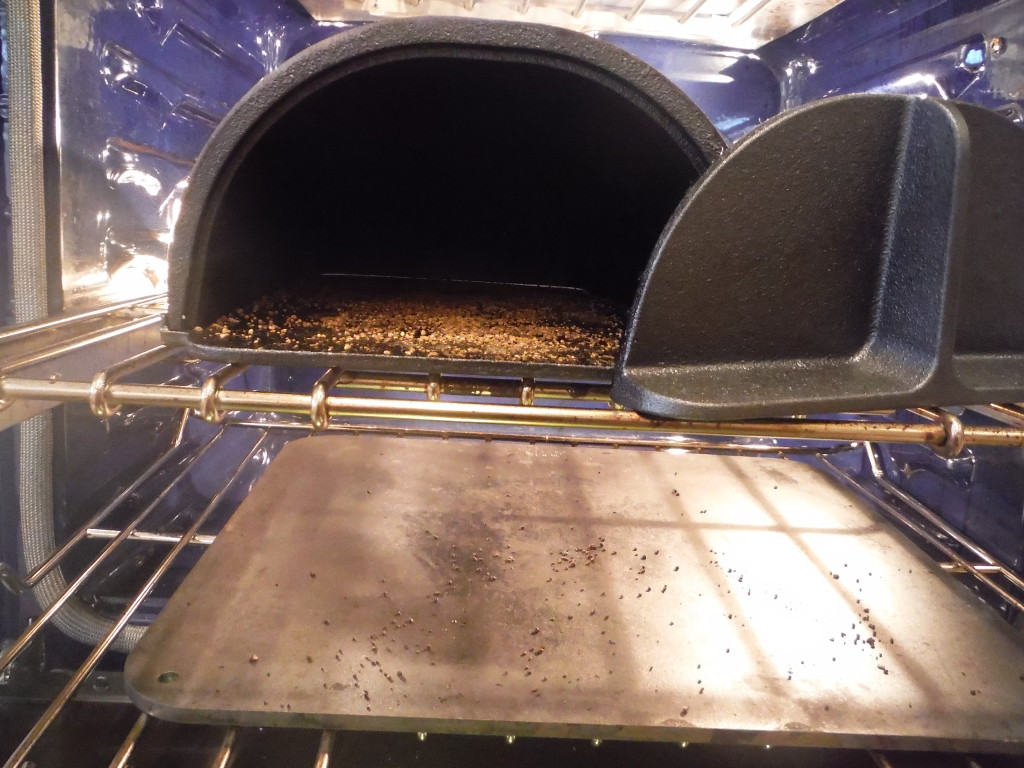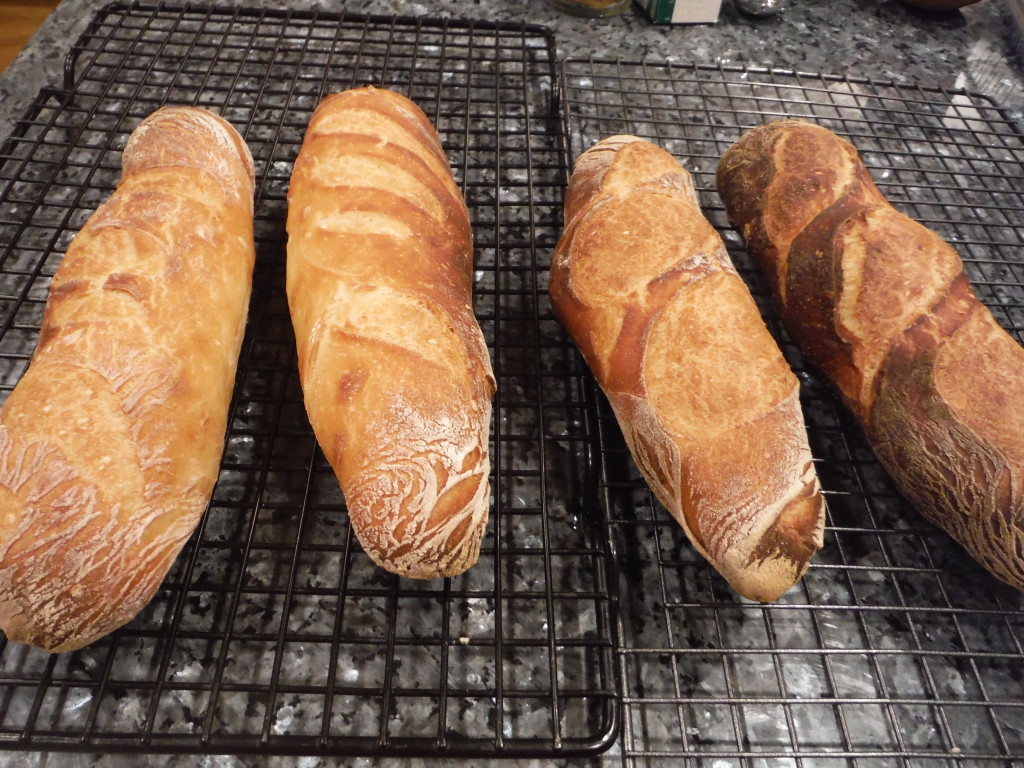A few years ago there was a media sensation when the New York Times published an article on an innovative way to bake bread from Jim Lahey, owner of the Sullivan Street Bakery. http://cooking.nytimes.com/recipes/11376-no-knead-bread . There were two key ideas in this approach. First, was that adequate gluten can be developed through the action of time rather than physical kneading (hence the term, “No Knead Bread”). The second was that a hot Dutch oven made a good container in which to bake bread. The high heat capacity of the Dutch oven provided good oven spring, and its small size trapped the moisture given off as the bread baked, which it develop a good crust.
I have made bread this way and it does work very well, but it has a few drawbacks. The first minor drawback is that you can really only make a rounded loaf in this way because of the shape of the Dutch oven. The second major drawback is that it is awkward and a little dangerous trying to dump the risen dough into the hot Dutch oven to start baking the bread. It is very easy to burn yourself in the process.
The Fourneau oven is an attempt to improve on the original Dutch oven approach by designing a cast iron oven insert which would have the same benefits as the Dutch oven, but would be easier to use. Since I have trouble passing up new bread making tools, I bought one, and made two batches of baguettes over Christmas vacation. They turned out very well, and the Fourneau oven operated as promised. (I need to work on my ability to shape baguette dough, but that is another story.) The Fourneau oven does have its own drawback, which is that it is relatively small so that it can fit in your oven, and that limits the size and shape of the loaves baked in it. As suggested in their materials, a good way to use the Fourneau oven is in combination with a baking steel. Thus the first phase of baking (when a moist environment is desirable) is done in the confined Fourneau oven, while the second phase is done on the baking steel. This can allow multiple batches to be produced relatively quickly on the two baking surfaces.
The following recipe will make 4 small baguettes
500 g. bread flour
½ tsp. yeast
2 tsp. salt
1-5/8 cups water
Mix together the bread flour, yeast, and salt. Add the water and mix well with a dough whisk until all the flour is moistened. Cover the bowl with a plate or plastic wrap to auto-lyse for 15 minutes. This resting step will help with gluten development. After the 15 minute rest, continue mixing the dough with a dough hook until the dough is smooth. This will be a very wet dough.
Allow to rise until doubled, which will be several hours depending on the temperature. A good approach is to put it in the refrigerator overnight and to bake the bread the second day.
Heat up the oven, with its Forneau oven and baking steel inserts, to 485 degrees. Allow at least 30 minutes for this.
Cut the risen dough into 4 pieces and form 4 baguettes. Allow the baguette doughs to rise for at least an hour before baking. During this second rise cover them with a cloth or plastic. Slash the tops of the baguettes when you are ready to bake them.
Dust the peel with grits or bran to provide a slippery surface for the dough and put two of the baguettes in to the Forneau oven for 15 minutes with the door on. Then remove the half baked baguettes to the baking steel for another 10-15 minutes until they are fully baked. While the first two baguettes are on the baking steel, the last two baguettes can be baked in the Forneau oven with the door closed.
Allow the baguettes to cool fully on a cake rack before slicing them.




